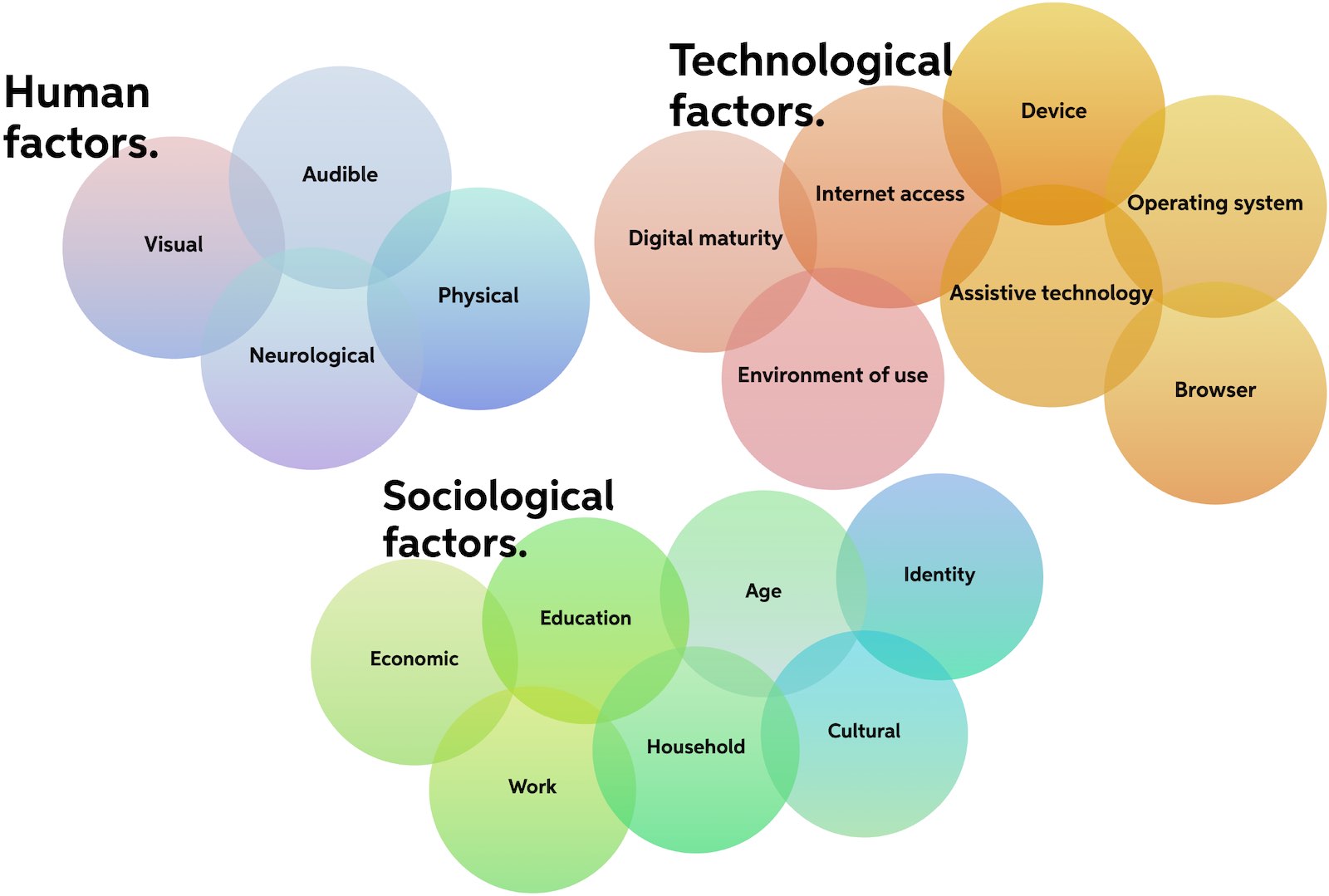People, and the frameworks we use for understanding people, are at the heart of effective strategy and design work.
We’ve previously explored how there is no average person, which makes it challenging to use personas and archetypes to qualify an audience or user.
Why is it so difficult to group people together?
Because behind our inherent complexity is the intersectionality and fluidity of who each us as individuals is. We are all incredibly nuanced and different, more individual than archetype.
People are complex & fluid
Often when designers or strategists talk about people or users, there’s a tendency to assume that people fit into neat, one-size-fits-all boxes that describe behaviour and experiences universally within that group. For instance, you might hear a product team talk about how something could work better for new moms, or for people from New York who don’t like pizza, or for basketball fans who visit a site once a week.
It’s not that simple, however, to understand the human complexities that make up your audience or user base. There are many identities, circumstances, and fluid behaviours that influence your users, on a moment-to-moment and longer-term basis.
Consider a new parent
How might a parent vulnerable to migraines be affected by their pain on any given day?
What about a parent who homeschools? If they are the only parent? Or have a nanny?
Or a parent from an underrepresented community with specific cultural and child-rearing standards? Or who is a recent immigrant?
A parent who may have a higher income? Or who may have recently lost their job?
The examples above could be traits of many different new parents or a series of these factors could describe one parent. Is your team considering all of these and other intersectional factors? How might acknowledging these traits and who they represent bring more clarity to your service planning and product strategy?
All of the individual factors that make up identity and user contexts are most influential when we think about how they combine to influence how someone engages with products and services. The complex factors and examples shared above bring us well beyond typical demographics such as age and gender. Together, all of these factors and more represent who each individual person is.
We can better understand the individuals our products, services, and learning programs are designed for by leveraging a concept called intersectionality.
What is intersectionality?
Intersectionality is a way of thinking through how human, technological, and sociological factors interact with one another to form a clearer picture of who someone is.
In understanding how these factors combine, we can more deeply understand an individual’s priorities and context of use of any given product, service, or learning program.
The three primary categories of intersectional factors
- Human
- Technological
- Sociological
Be flexible to fluidity
Another area that is important as part of intersectional thinking is the concept of fluidity. Factors related to culture, geography, mood, behaviour, and abilities (temporary and permanent), as well as different devices, screen sizes, and internet connections, are ever-changing influences on user needs and behaviour.
Since many of these areas are constantly shifting (abilities, mood, place, devices), even a snapshot of who we are at this moment isn’t necessarily representative of us on any given day. This is where being flexible to the fluidity of circumstances that impact each person can have a meaningful impact on experience design and customer service.
The complete set of high-level intersectional factors to consider

Human
- Visual
- Audible
- Physical
- Neurological
Technological
- Digital maturity
- Internet access
- Device
- Operating system
- Browser
- Assistive technologies
- Environment of use
Sociological
- Economic
- Education
- Work
- Age
- Identity
- Cultural
- Household
Each of these factors plays a role in shaping how each of us behaves and perceives products, services, content, language, and interactions.
How intersectionality influences design and strategy work
Intersectionality, user contexts, and an understanding of the fluidity of your users should form the backbone of all of the human-centred design and strategy work you undertake, whether you’re looking to improve an existing product or service or create a new one.
In general, consider that any time you want to group people, no matter how you categorize them, whether, by race, age, behaviour, interests, or any other grouping of factors, every person in that group may be different across any number of other factors.
Your team may typically leverage tools like marketing personas to build out your design or product requirements. However, personas and similar generalizations aren’t well suited to the complexity of your users.
There are many other methods you can use to go beyond personas when you’re looking to engage authentically with people. These can include user states and context maps, Jobs-to-be-done (JTBD), and user stories.
Learn more about going beyond personas
The impact of intersectional thinking
Making strategy and design decisions with intersectionality at the forefront will guide your team in identifying genuinely user-centric design requirements.
Once you establish these requirements, your product or service will be able to meet the goals and expectations of your users across different circumstances, contexts, and environments, and to embrace their unique identity.
By understanding how all of these factors mix and interact to form the experiences of your users, you can design your products and services in a much more intentional way. Ultimately, this means delivering products and services that can be used and loved by a much broader market, while improving the experience for your existing users.
Not sure how to get started with an intersectional, inclusive design process?
From our inclusive public sector work to our healthcare, insurance, banking, and other private sector work, we’ve developed and continue to mature the leading inclusive design playbook. Reach out now to bring impactful service design, product strategy, and learning outcomes to the markets, communities, organizations, and employees you work with.
Learn more about our approach to inclusive design
Article last updated: June 20, 2023